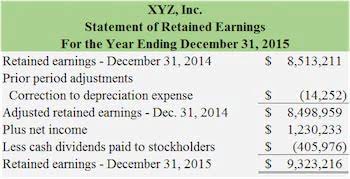
A predetermined overhead rate is an estimated amount of overhead costs that will be incurred during a set period of time. This rate is used to allocate or apply overhead costs to products or services. Suppose that X limited produces a product X and uses labor hours to assign the manufacturing overhead cost. The estimated manufacturing overhead was $155,000, and the estimated labor hours involved were 1,200 hours. The most common types of activity used to calculate a POHR are direct labor hours, machine hours, and units produced.
Real-World Application: A Manufacturing Case Study
Based on the above information, we must calculate the predetermined overhead rate for both companies to determine which company has more chance predetermined overhead rate of winning the auction. This consolidates overhead cost information from multiple sources, including payroll, point-of-sale, billing and more. With a unified data set, generating financial statements and calculating accurate overhead rates is streamlined. This rate would then charge $4 of overhead to production for every direct labor hour worked.

AccountingTools

(1) This method is simple and easy to calculate since labour hours are readily available from time sheets, job cards, etc. Direct labour hour rate is computed by dividing the factory overhead by direct labour hours. Overhead may be stable but absorption rate may not be appropriate as the basis is not suitable, when the raw material prices fluctuate. This option is best if you have some idea bookkeeping of your costs but don’t have exact numbers.
Determine Activity Drivers

Calculating the predetermined overhead rate is a crucial step in cost accounting, allowing businesses to accurately allocate overhead costs to their products or services. This rate is essential for determining the full cost of production and setting appropriate selling prices. Understanding how to calculate this rate empowers businesses with the ability to make informed decisions, optimize pricing strategies, and enhance profitability. The estimated or budgeted overhead is the amount of overhead determined during the budgeting process and consists of manufacturing costs but, as you have learned, excludes direct materials and direct labor. Examples of manufacturing overhead costs include indirect materials, indirect labor, manufacturing utilities, and manufacturing equipment depreciation.

Activity Base Selection
Using small business accounting software centralizes overhead tracking and analysis. Features like automated categorization and reporting provide real-time visibility into overhead costs. Knowing the overhead cost per unit allows the business to set competitive pricing while still covering their indirect expenses.
Job Costing
Nonetheless, it is still essential for businesses to reconcile the difference between the actual overhead and the estimated overhead at the end of their fiscal year. Hence, it is essential to use rates that determine how much of the overhead costs are Bakery Accounting applied to each unit of production output. This is why a predetermined overhead rate is computed to allocate the overhead costs to the production output in order to determine a cost for a product. The predetermined overhead rate is, therefore, usually used for contract bidding, product pricing, and allocation of resources within a company, based on each department’s utilization of resources. Similarly, the predetermined overhead rate allows a business to use consistent costing standards with its products. For example, if a company incurs cooling expenses, then the expenses are likely to be higher in summer than in winter.
Unit Converter
- If you’d like to learn more about calculating rates, check out our in-depth interview with Madison Boehm.
- One of the key elements in determining the overhead rate is calculating direct labor hours.
- If the job in work in process has recorded actual material costs of 4,640 for the accounting period then the predetermined overhead applied to the job is calculated as follows.
- Of course, management also has to price the product to cover the direct costs involved in the production, including direct labor, electricity, and raw materials.
This method is used in industries where revenue is a significant indicator of resource consumption. Direct costs are costs directly tied to a product or service that a company produces. Direct costs include direct labor, direct materials, manufacturing supplies, and wages tied to production. Yes, it’s a good idea to have predetermined overhead rates for each area of your business. To calculate their rate, the marketing agency will need to add up all of its estimated overhead costs for the upcoming year. For example, the recipe for shea butter has easily identifiable quantities of shea nuts and other ingredients.
- Carefully tracking overhead expenses is key for small businesses to optimize costs.
- Commonly, the manufacturing overhead cost for machine hours can be ascertained from the predetermined overhead rate in the manufacturing industry.
- Similarly, as mentioned above some businesses may use it as a monitoring and control tool.
- Following expense optimization best practices and leveraging technology keeps overhead costs in check.
- (a) We commonly use direct labor hour as the basis when there is a labor intensive environment in a manufacturing company or factory.
- To allocate overhead costs to production departments, the predetermined overhead rate is multiplied by the actual activity level in each department.
- Predetermined overhead rates are used to determine the value of inventory, ensuring accurate financial reporting.
Why are predetermined overhead rates important?
- Direct labor hours measure the amount of time workers spend performing tasks directly related to producing goods or services.
- This method is suitable for businesses that rely heavily on machinery in their operations.
- Finally, you would divide the indirect costs by the allocation measure to achieve how much in overhead costs for every dollar spent on direct labor for the week.
- Renegotiating contracts with vendors may yield savings on supplies or services.
- While predetermined overhead rates are widely used and needed for businesses, they may have some limitations.
- Actual or predetermined direct labour cost method is calculated by dividing the overhead cost apportioned by the wages paid or expected to be paid and expressed as a percentage.
- Businesses need to calculate the costs of a product before the actual results can be determined due to several reasons.
(3) The rate is not affected by wage rates, different kinds of incentive systems, etc. (2) When there is little variation in wage rates payable to different categories of employees. Discover essential eBay selling tools, including seller, marketing, and listing tools to enhance your ecommerce business efficiency and increase sales.
Can be Used in the Budgeting Process
There are many reasons why businesses need to calculate predetermined overhead rates, although, they may have some limitations. By utilizing this rate, businesses can distribute overhead costs consistently across their products or services, ensuring a fair and equitable allocation. This approach provides valuable insights into the true cost of each unit produced, enabling businesses to make informed pricing decisions that align with market demand and competitive dynamics. The single overhead rate method is a simplified approach that uses a single predetermined overhead rate for all overhead costs. This is done by dividing the total estimated overhead costs by the total estimated direct labor hours or machine hours. The single overhead rate method is easy to apply but can be less accurate if the overhead costs vary significantly across different activities.
